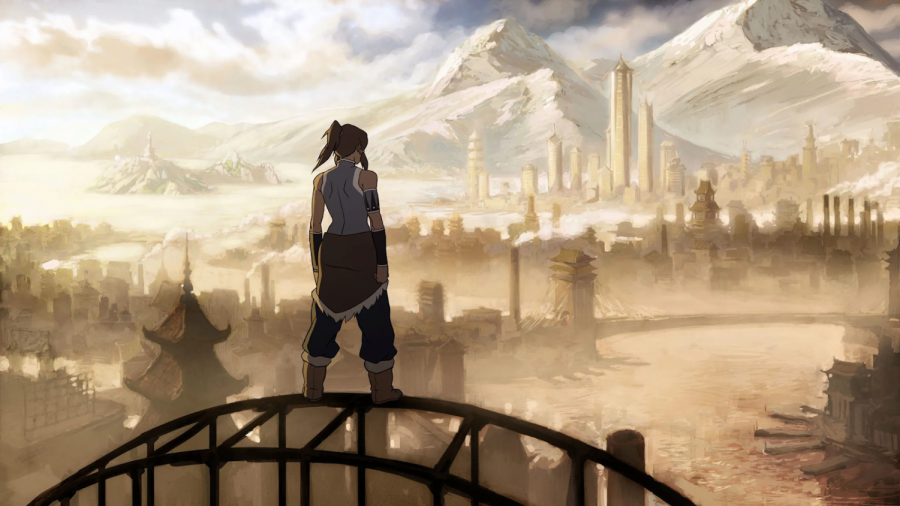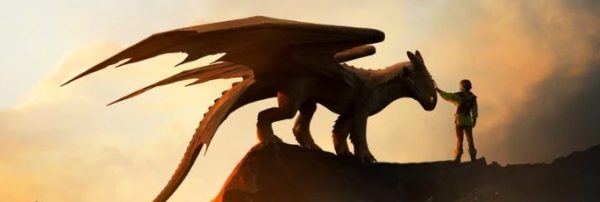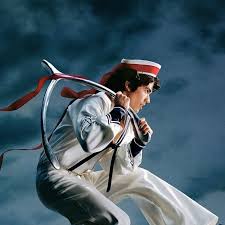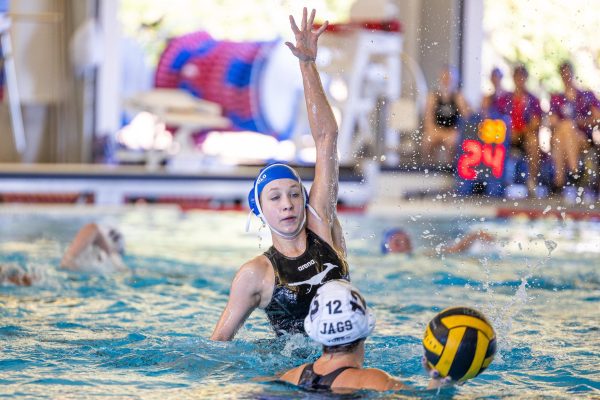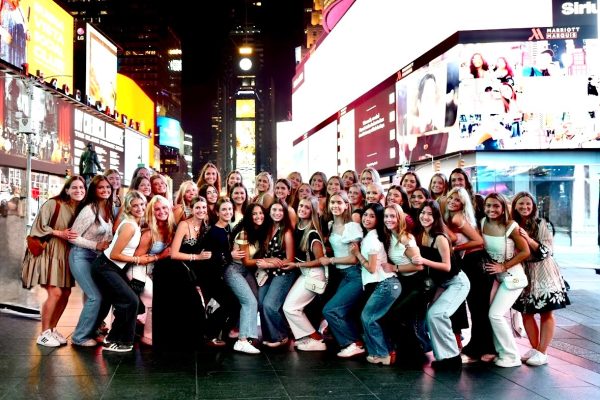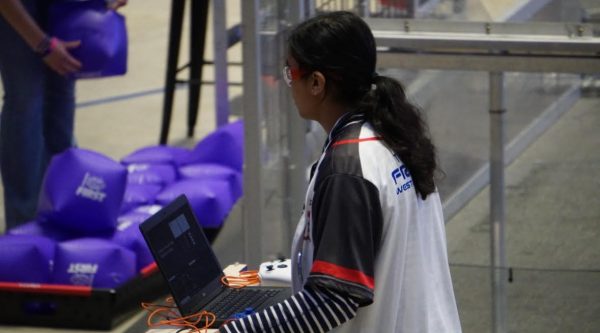Avatar: The Last Airbender’s controversial sequel receives unwarranted hate
After wasting away hours watching “Avatar: The Last Airbender” on Netflix, old and new fans of the series desperately searched for something to fill the void. Luckily, the show’s sequel, “The Legend of Korra,” which originally aired in 2012, was released on Netflix Aug. 14. This show can indeed fill the void left by “A:TLA” — depending on who you ask.
Although “A:TLA” was immediately a hit in both 2005 and 2020, unfortunately, the same cannot be said for “TLOK.” Fans of both shows are locked in an endless debate over whether or not “TLOK” is a good show that deserves our respect. Haters of the show argue that the writing is poor, the plot is underdeveloped and the characters lack depth. Defenders of the show argue for the main character’s development, the mature and complex ideas and the modern setting, among other things. But if you ask me, “TLOK” is a fantastic extension of the Avatar story with characteristics of its own that make it all-the-more brilliant and unique.
The show takes place 70 years after the events of “A:TLA” in the same fictional universe, but it is a very different world than the one fans grew to love in the original show. There are large cities, an industrial boom, technological development, television, radio — all things that characterize the modern world. Some compare the setting to 1920s America, although it is important to note that both shows take place in various regions of Asia, meaning the setting is most likely based on cities like Shanghai and Hong Kong in the 1920s.
There are still four nations, but a place called Republic City has developed. Republic City is not another nation; rather, it is a place where benders and non-benders can live together. This is the primary setting of the show. Republic City is especially significant because it sharply contrasts with the separate and divided four nations we knew in “A:TLA,” signaling a transition to a more modern world. In all, “TLOK” is characterized by differences from “A:TLA” — a characteristic that some people hate and some love.
Most of our beloved characters from the first show — Aang, Sokka, Suki — have passed away at this point in time, but some others — Katara, Toph, Zuko — make comebacks in old age. While the absence of the well-loved characters from “A:TLA” is certainly saddening, “TLOK” consistently makes references to the events and people from the first show, which is really cool to see. This also makes way for a new Team Avatar with a new story.
The show follows the journey of Aang’s successor, Avatar Korra, a headstrong and rebellious young woman of the Southern Water Tribe. Unlike her predecessor, she is eager to be the Avatar and has mastered most of the elements by age 17. The world seems to be in balance after the end of the Hundred Years’ War, but Korra soon learns that that is not the case. Even though there is not a looming threat over the whole world, imbalance exists everywhere — in the cosmopolitan Republic City, in the water tribes, in the Earth Kingdom. Instead of following one plot that spans multiple seasons, Korra fights a different villain in every season with the help of her own “Team Avatar” — a characteristic that, once again, some people hate and some love. “TLOK” follows Korra’s development as she defeats different villains, radically transforms the world and learns what it really means to be the Avatar.
I believe the main reason the show receives so much hate is because it is so different from “A:TLA.” People can’t let go of their nostalgia and want to watch another show exactly like the first one. But “TLOK” is nothing like “A:TLA” — and that’s OK. The plot, the villains, the characters and the ideologies are all different, and this is what makes it amazing. Nobody wants to watch a carbon copy of the original show; we want something new. We need to stop holding “TLOK” to the same standard as “A:TLA” and recognize that on its own, it is a pretty great show.
Additionally, “TLOK” continues the original show’s tradition of amazing female representation and role models. Korra is a bisexual woman of color, but nothing about her identity holds her back from being an extremely strong and powerful Avatar. The show’s animation director Yoo Jae-myun revealed in an interview that Nickelodeon initially opposed the idea of a female protagonist. This makes Korra’s identity even more significant, as the creators had to overcome many hurdles to create a protagonist like Korra. For many young girls, seeing someone who looks like them in a place of such high power and strength means a lot.
One of the things I love most about this show is the setting. While some long for the nostalgic, older setting of the original show, I love the modernization and technological development that has taken place. It represents an accurate progression of society, and it offers an interesting and different approach to telling the Avatar story. The biggest difference is Republic City, a cosmopolitan urban center comparable to Shanghai and Hong Kong in the 1920s. Obviously, large cities are a completely new idea in the Avatar universe. There is public transportation, a metalbending police force, cars, radio, television and an addictive sport called pro-bending. The aspect of modernization adds more depth to the Avatar story and allows viewers to see it from a different perspective. “TLOK” masterfully shows what comes with modernization — class differences, new inventions and innovations, new rules and regulations. Simply put, the setting is realistic.
With modernization came the expansion of bending. Something “A:TLA” did amazingly was showing so many different ways bending can be used in this world, and “TLOK” takes this even further. There is a metalbending police force in Republic City, benders use their skills for their jobs (as opposed to just fighting) and there is even a sport called pro-bending, where teams of water, fire and earth benders compete against each other in tournaments. “TLOK” shows how bending was incorporated into everyday life and how it was incorporated into modernization efforts. Korra’s bending abilities have expanded as well — she is the first metal-bending Avatar, she can spirit-bend and she can energy-bend, among other things. The natural progression of society was accompanied by the natural progression of bending, a very realistic aspect of the setting.
One of the major grievances against the show is its separated plot, as Korra fights a different villain in each of the four seasons consisting of around 15 20-minute episodes. Many yearn for the long, extended plot over a number of seasons with a huge climax at the end, like in “A:TLA.” However, I argue that “TLOK” is not actually four plots. It is still one large plot but in a subtler way. The events of the previous season flow cleanly and effortlessly into the next; Korra uses what she learned in previous seasons to grow and develop as an Avatar; viewers can see the world transforming from one season to the next. The show’s more separated-out plot works for its content and purpose.
The villains themselves are truly a marvel. While Aang’s defeat of the main villain in “A:TLA” — Firelord Ozai — is certainly unparalleled, villains in the original series lacked the complexity and depth that is ever-present in “TLOK.” Every villain has a different ideology which are clear allegories to history, and they stick to their principles (for the most part). While Firelord Ozai simply wanted to conquer the four nations, the villains Korra faces have much deeper desires that reflect modern issues in a modernizing world. For example, the first villain, Amon, wanted equality between benders and non-benders. The third villain, Zaheer — my personal favorite — wanted freedom from oppressive governments. This represents much deeper and more complex ideas, and viewers find themselves questioning whether or not they even disagree with the villains. Their ideologies were justified, but they took them too far — and Korra could even learn something from each of them. To me, the development of the villains is one thing “TLOK” had over its predecessor.
Character development is a somewhat controversial topic related to this show. Many dislike Korra as a protagonist because she is hot-headed, arrogant, rebellious, impulsive — in other words, she is the complete opposite of Avatar Aang. Once again, I believe people can’t let go of their nostalgia for the original show enough to appreciate “TLOK.” But it is also important to note that while these descriptions of Korra are 100% accurate, she undergoes spectacular character development and is unrecognizable by the end of the fourth season. What makes this character development so special is that it’s subtle. You don’t notice her changing throughout the series until you compare her character at the beginning and at the end. This is because her character development is seamlessly woven into the plot. As she defeats villains, she learns from them. As she experiences failures, she learns from them. As she deals with obstacles, she learns from them. These small changes in her character accumulate into a slow and steady character arc that represents the way people change in real life. While her arc is not as drastic and well-developed as Zuko’s from the original show, it still deserves appreciation.
Korra also has to endure challenges that are at the same level or even worse than what Aang had to endure. One of her enemies poisons her, and she is left paralyzed and traumatized for years, and even after she has “recovered,” she is still not the same. In the first few episodes of season four, we see Korra dealing with her trauma and her PTSD in a realistic way. She does not overcome it immediately, and we see how it affects her — she alienates herself from her friends and she constantly relives the traumatic moments, hindering her ability to be the Avatar. When she finally overcomes this hurdle, her trauma is not forgotten; rather, it develops her to be a stronger and more compassionate person. It adds a lot of depth to her character development and teaches kids about mental health in a non-romanticized way.
Finally, “TLOK” is one of the first kids’ shows to include LGBTQIA+ representation. Kids’ shows lack LGBTQIA+ representation, and “TLOK” does a masterful job at representing it in a sweet and positive way. As mentioned before, Korra is bisexual and the show hints at her relationship with Asami, another female member of “Team Avatar.” Their relationship is confirmed in the comics that continue Korra’s story. Korra and Asami’s romance in the show is subtle but impossible to ignore. There are signs of its development throughout the show, but not in a forced way. It’s natural. When Korra and Asami come out in the comics, their friends and family accept them. But the comics also acknowledge the fact that not everyone in society accepts same-sex relationships, and they acknowledge the struggles of the LGBTQIA+ community today. The creators of the show present the romance in a sweet and normalized way while also teaching kids about real world issues.
I’ll concede that “TLOK” is not quite as spectacular as “A:TLA.” But it’s important to remember: few things are. The original show set the bar high; so high, that even a well-made sequel like “TLOK” has trouble with its popularity. Yes, there are some things I dislike about the show — weak and forced comic relief, some flat and underdeveloped characters, too much emphasis on the love story, poor writing in some places. But in spite of all of those things, it is still a loveable show that is even better than “A:TLA” in some areas. If you are considering watching this show, here is my advice to you: don’t compare it to “A:TLA.” Hold “TLOK” to its own standard, and then you can truly appreciate its excellence.

